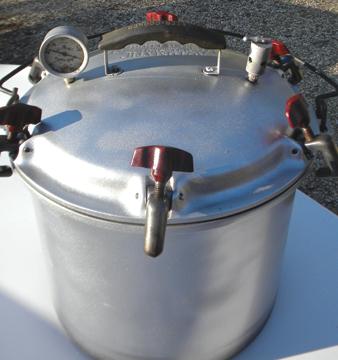A history lesson on pressure cookers
Published 12:00 am Wednesday, April 6, 2011
Over the years, cooking food has gotten easier and easier. Nowadays you can buy food that is pre-cooked. Just pop it in the microwave and press start. No cooking, just heat and eat!
In the early 1900s almost everyone canned their food by putting it in Mason jars. One way people cooked their food was in a pot known as a in a pressure cooker. If you are little younger, you might be asking what a pressure cooker is and how it works?
There are two types of pressure cookers: one is for cooking food until tender or done for family meals, and the other cooker is for canning food — you put jars of fresh food in it and sealed them in a steam water bath for later use.
Most pressure cookers were made of aluminum, and the lid had about six screws that held the lid of the pot down. On top of the lid were a pressure gauge and a pressure valve that let out some of the pressure from the pot. If for some reason the pressure gauge didn’t work, the pot could explode, and in some cases it did just that.
Sears & Roebuck sold a cooker called Kool-Kwick steam pressure cooker, and it was probably sold in stores in the 1930s. Before using the cooker, you had to read 17 different sets of safety instructions on how to use the cooker. For example, if you cooked fruit, the cooker pressure was set at 5 pounds.
Another cooker, which is pictured, was the Automatic Hot Spot Master Cooker. This cooker canned cans or wide-mouth Mason jars filled with fresh food. The cooker was made in Chicago and sold for about $15. Pressure cookers are making a comeback in today’s society so the busy family can sit down to a home cooked family dinner.
I can remember in the 1950s
when my sister and I caught some crawfish and put them in a pressure cooker. When our mother got
home, the cooker was close to exploding! Maybe that’s why they always say, read the instructions before using.
Louisiana Treasures Museum has the pressure cooker in the photo on display along with lots of other cooking items from the 1800s to present. Come by for a visit or schedule tours by calling 225-294-8352.
Wayne Norwood is a lieutenant with the St. John the Baptist Sheriff’s Department and owner and operator of the Louisiana Treasures Museum.






